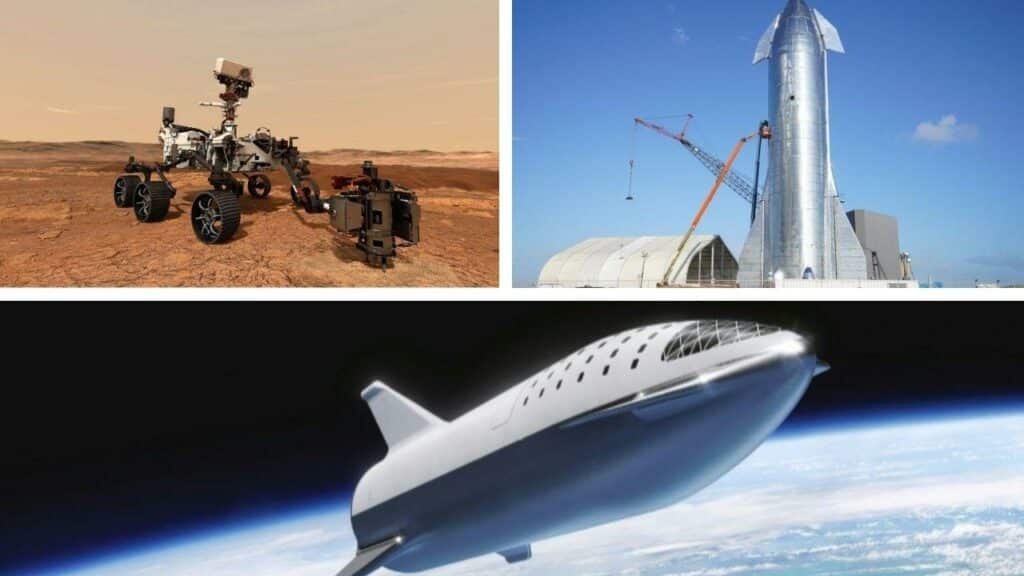Going to Mars, man has always dreamed of it. This is all the more possible since he recognizes that the planets of the solar system are round in shape. But, at the dawn of this millennium, “going to Mars” takes on a new meaning. In a few years, probes and robots have provided thousands of images and millions of data on the red planet. All the major space programs are reviewing them and planning new missions.
What will this eventual conquest of Mars be made of? In his vision of the colonization of the Red Planet, Elon Musk counts above all on the Starship rocket to transport travelers. On the other hand, NASA aims to use its future Space Launch System (SLS).
Find out about man’s journey to Mars.

When will the first spacecraft be launched?
The exploration of the planet Mars occupies a particularly important place in the scientific programs of space exploration of the solar system. First of all, it is a nearby destination. It is therefore relatively easy to send spacecraft there. This is why Elon Musk and NASA have embarked on this project to colonize Mars.
To achieve this colonization, SpaceX’s Starship rocket is intended to take travelers to Mars this year or the next. It is a reusable rocket, affordable and capable of landing on Mars after 6 months of travel. It is the new spacecraft designed by SpaceX. As for NASA, it hopes to send a first manned mission to Mars as early as 2033. But there is still no question of settling there permanently.
Is it a simple exploration?
Of all the planets in the Solar System, the Red Planet is the most accessible and least inhospitable to Earthlings. Unlike the other planets in the Solar System, Mars has undoubtedly experienced Earth-like conditions in the past. This is why conquering it is a technological challenge.
Going to Mars offers several reasons:
- To work for world peace through a unifying project ;
- To test the human capacity to adapt ;
- To understand the genesis of the planet and its evolution;
- To reconstruct the history of its climate;
- Accelerate technological advances or simply enjoy the incomparable beauty of the landscape.
How many people will be on board the space ship?
Jean-Marc Salotti, researcher at the Polytechnic Institute of Bordeaux and member of the Planet Mars association, recently said how many people would be needed to ensure the survival of a colony on Mars. According to him, it would take at least 110 people to play the specific roles.
Indeed, when the colony reaches the critical number of 110 individuals, certain tasks can be accomplished as a group or shared for the good of all. This number of people on board can therefore ensure the survival of the said colony. This can be done with the idea that cooperation between members of the colony can share certain burdens. Those generated by needs such as the production of electricity, drinking water, or oxygen are crucial.
Do they build a base?
To build a base, transporting cinder blocks, bricks and plasterboard in a spacecraft remains a challenge in terms of cost and efficiency. But water or food, for example, will take up less space and weigh less. These make them both more convenient to transport and more useful when they arrive at their destination.
Although we must limit the life span of the first Martian inhabitants to a few years, they will have to build a base. They will need, for example, some laboratories on the planet to work during the day, and housing to rest. Among the solutions considered, we can mention the use of polymers produced by insects or old mushrooms. The recycling of urine has also been mentioned.
What will be inside?
It seems necessary to produce part of the food needs during the trip once on the red planet. The idea is to use a bioregenerative greenhouse that will produce vegetables and fruits and also release breathable oxygen, while purifying the ambient air of carbon dioxide.
Indeed, Nasa has already selected a dozen plants that will be transported to Mars. They are lettuce, spinach, carrots, tomatoes, green onions, radishes, peppers, strawberries, fresh herbs and other cabbage. On the sanitary level, the spacecraft will have to have blood reserves and the crew will have to be able to perform blood transfusions.
